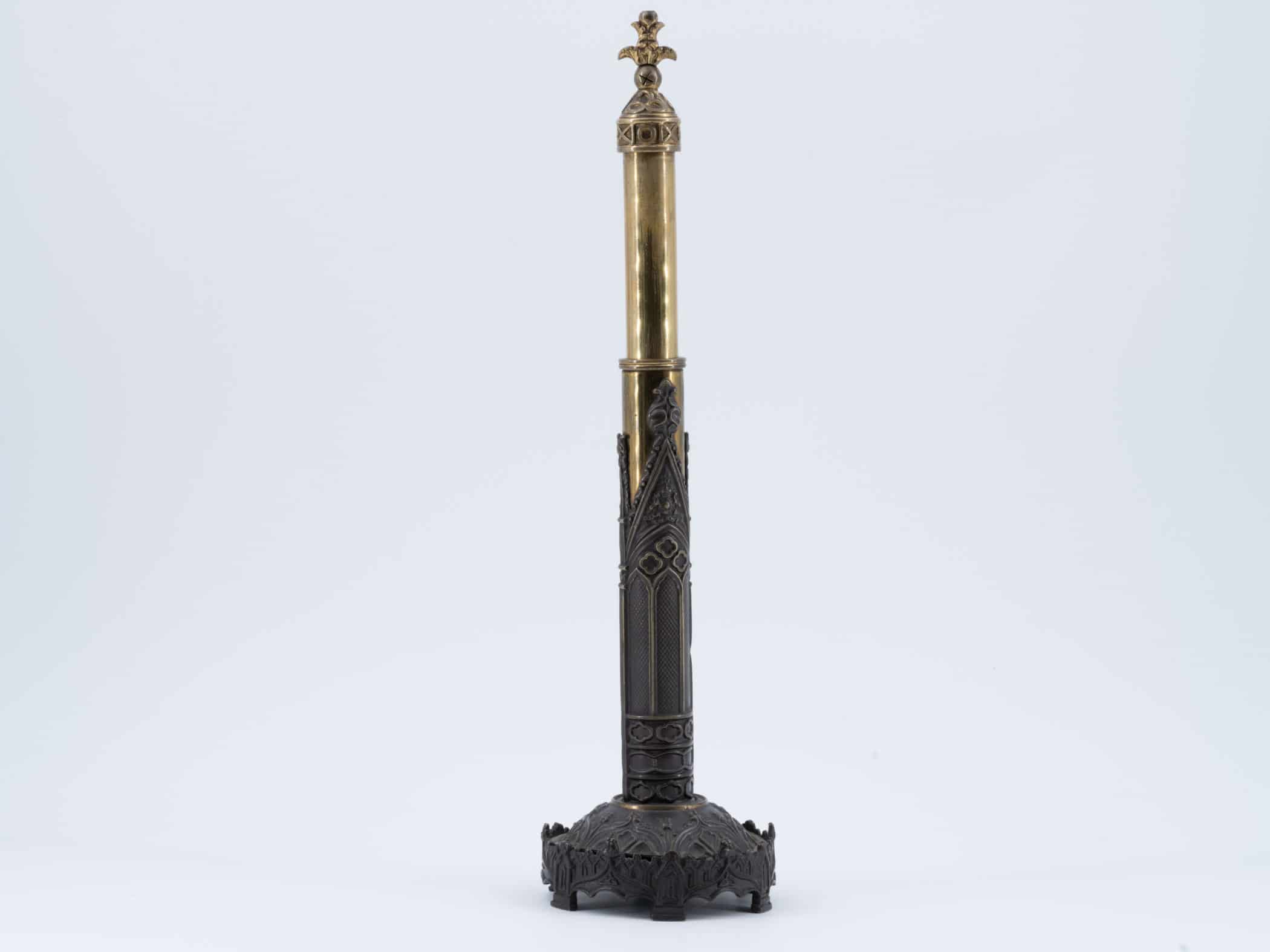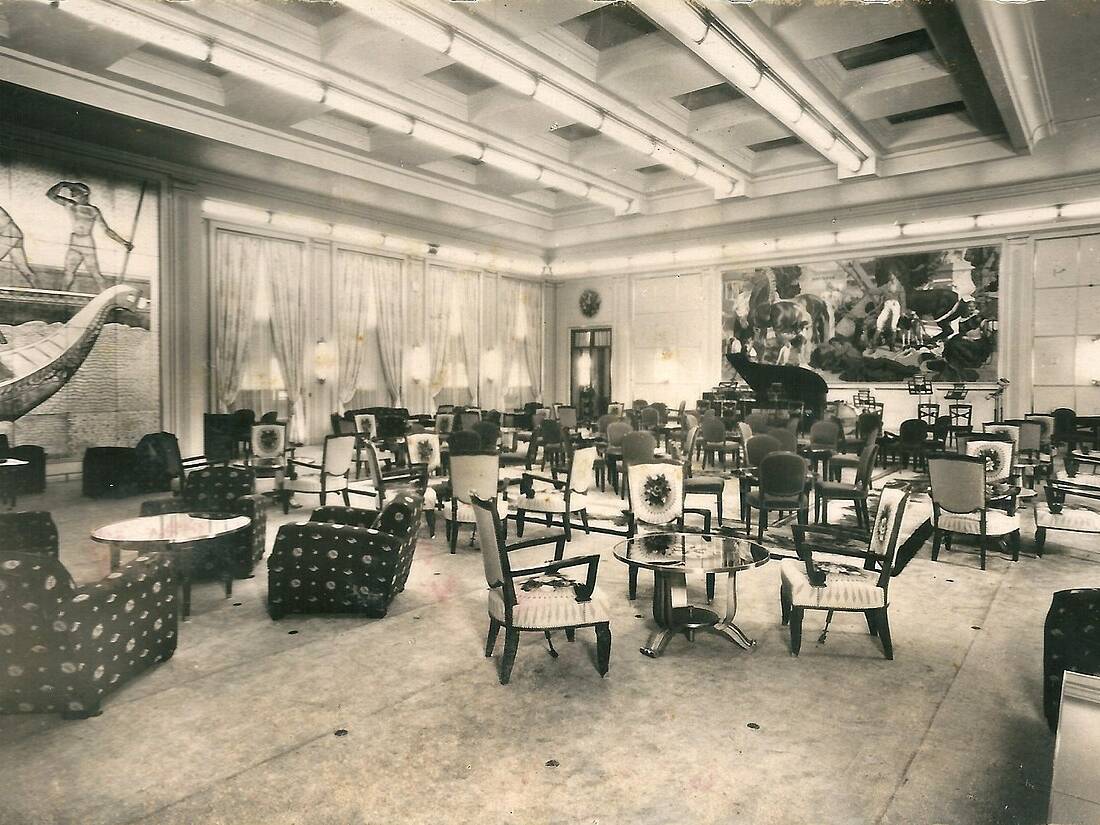Hand screen: a rare and curious object
Its fragility has often meant that it has not stood the test of time, just like its closest relative, the fan. Although their use is very similar, it is never concomitant. The fan keeps one cool on hot summer days, while the handheld screen protects from the heat of an open fire.
Restricted to private use, the hand screen received less attention to materials and patterns than did the fan. This did not prevent the making of some very nice ones!
Normally, the screen was made of paper or silk, but without careful storage in a case, it soon became the helpless victim of moisture, insects or rodents. Its fragility was paradoxically the defect of its quality: since the hand-held screen made it possible to protect oneself from the heat and sparks of the fire, it was also the first victim of it. This is why paper was preferred to precious fabrics, it could be easily changed. However, silk was always preferred for the most refined objects.
These risks and accidents that threatened the fragile screens are also one of the reasons for the rarity of these objects. Hand screens often ended their lives in the fireplace, as once the paper or fabric was burned by a spark or distorted by the heat (or simply out of fashion), the owner would throw the screen into the fire, keeping only its case and stand.
Its use developed in Europe in parallel with that of the fan, although it was never used as an ornament. Restricted to private and domestic use, the screen is sometimes – as here with the one we are presenting – a refined object, delighting both the happy owner and the closest circle of friends gathered in the boudoir or small apartments.
The production of fireplace screens in France was characterized by very ornate screens – mostly with engravings – and with an educational purpose. They were used to learn history, geography or poetry; they were also valuable aids to start or re-start a conversation.
The one we present is an English production as the label under the base indicates:
Gothic Revival: English Neo-Gothic
Day B. was a successful manufacturer based in Birmingham. His Birmingham Gothic designs played on the Gothic Revival fashion by using characteristic elements of the style such as pointed arches and stylised evocations of cross-arches. The British architect Augustus Pugin (1812 – 1852) never accepted the deviation from the Gothic style he loved so much.
The production of the famous Day B. in Birmingham was a huge success, especially during the years 1830 – 1840. His hand fire-screen were so popular that he was appointed the official supplier to the crown for these items. On a later production than the object we are presenting, Day B. obtained permission to proudly display the arms of the Royal House of England on his label.
The production of its cases was made entirely of cast brass. Only the screen had two different qualities: paper or silk, plain or patterned.
Finally, we note that the Victoria and Albert Museum of London presents in its collections a hand screen of the same brand as ours:
Marielle Brie
Art Historian for Art Market and Cultural Media
Author of the blog Objets d’Art et d’Histoire
Autres ressources et documentations
28 June 2025
Plaster Sculptures, Plaster Casts
For a long time, plaster casts suffered from a poor reputation. Often regarded as crude replicas, and sometimes even dismissed as inexpensive imitations, they nonetheless had…
17 April 2025
The Middle-Ages Furniture
Rare and highly sought-after, Middle-Ages furniture is making a strong comeback. An overview of this market, where enlisting the guidance of a professional is strongly advisable.
18 March 2025
Murano Glass Furniture
Since the beginning of the 20th century, Murano glassmakers have been exploring new horizons. After classic lighting and decorative art, Murano glass is now used to adorn…
16 December 2024
A bronze triton after the sculptures of François Girardon (1628 – 1715) in Versailles
This fountain element is all the more admirable as it is sculpted after the masterpieces of the Pyramid Basin, on the parterre of the North Wing of the Versailles gardens.
18 November 2024
Tyco Bookcase, by Manfredo Massironi, for Nikol International
A pure creation of optical art research in the 1960s, the Tyco library shelf designed by Manfredo Massironi invites the viewer to bring the work of art to life on a daily basis.
3 August 2024
The Ocean Liner Style
In the 20th century, the immense ocean liners connecting the Old Continent and the New World were ambassadors of tastes and innovations on both sides of the Atlantic.










